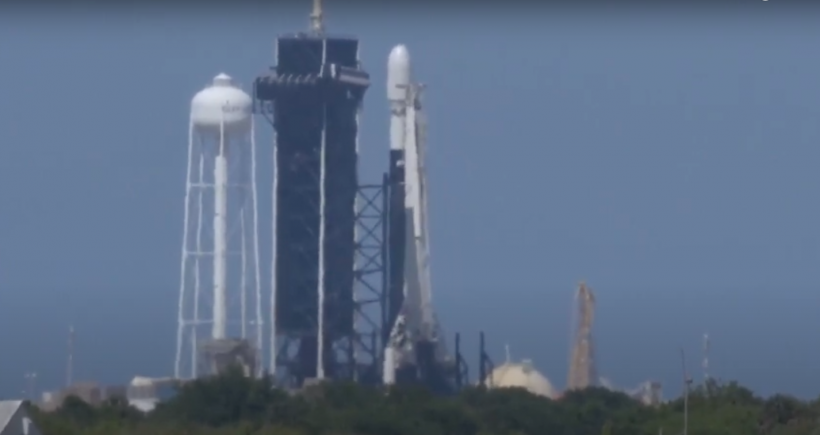With 53 of SpaceX's Starlink internet satellites, a SpaceX Falcon 9 rocket is scheduled to lift off, using a booster stage flying for a record-tying 12th time, from NASA's Kennedy Space Center in Florida this Friday, May 6 at 5:42 a.m. EDT (0942 GMT).

Known as Starlink 4-17, the mission will kick off up to four Starlink launches planned for May 2022.
Potentially making Falcon 9 the third Falcon booster to complete its 12th orbital-class launch in the last two months, SpaceX has chosen its booster B1058 to launch the mission's expendable upper stage, reusable fairing, and 53 Starlink V1.5 satellites into space.
It will be the 12th launch for this Falcon 9's first stage. If all goes according to plan, the vehicle will fly again after Friday. SpaceX aims to land the booster yet again, on its drone ship "A Shortfall of Gravitas," which will be stationed off the Florida coast, according to Space.com.
How Will SpaceX's Falcon 9 Launch Into Space?
A million pounds of densified kerosene and liquid oxygen propellants will be loaded into the two-stage Falcon 9 rocket beginning about 35 minutes before liftoff. Afterwards, the launcher will be run through customary pre-flight checkouts, chill down, and pressurization steps before igniting nine Merlin 1D main engines at T-minus 3 seconds, according to Spaceflight Now.
Powered by 1.7 million pounds of thrust, hydraulic hold-down clamps will be released to free the Falcon 9 to begin its vertical climb from pad 39A after an automated health check
According to Spaceflight Now, to begin a descent toward the company's drone ship "A Shortfall of Gravitas," which is parked a few hundred miles downrange in the Atlantic Ocean, the Falcon 9's first stage, tail number B1058 in SpaceX's inventory, will shut down about two-and-a-half minutes after liftoff.
About 45 minutes into the mission, the Falcon 9 will reignite the upper stage's Merlin-Vacuum engine. This will set the stage for the separation of the 53 Starlink satellites at T+plus 54 minutes, 30 seconds.
The Falcon 9 will aim to deploy the satellites in a near-circular orbit ranging in altitude between 189 miles and 197 miles (304 by 317 kilometers), at an orbital inclination of 53.2 degrees to the equator. The satellites will use onboard propulsion to do the rest of the work to reach a circular orbit 335 miles (540 kilometers) above Earth, Spaceflight Now reported.
Read Also: Will Starlink Work on Airplanes and Provide Wi-Fi? Elon Musk Says You Can Even Play Online Games!
SpaceX's Falcon 9: The 43rd Operational Starlink Launch
Starlink 4-17 will be SpaceX'z 44th dedicated Starlink launch overall and its 43rd operational Starlink launch.
The mission will raise the total number of working Starlink satellites in orbit above 2200.
SpaceX agreed to a deployment schedule that required half of the then 4425 satellites to be launched within six years when the company received its initial Starlink FCC license in March 2018.
The full constellation is expected to be launched within nine years of license receipt - March 2024 and March 2027, respectively.
Despite the fact that it took SpaceX 20 months after receiving its license to begin operational Starlink launches in November 2019, SpaceX will cross the halfway point on May 6th, 2022, nearly two years faster than required. This indicates that SpaceX has far exceeded the pace required to meet that schedule.
Related Article: SpaceX's Starlink Overheating Issue May Be Resolved with Software Update, But Man Just Used Water Sprinkler














